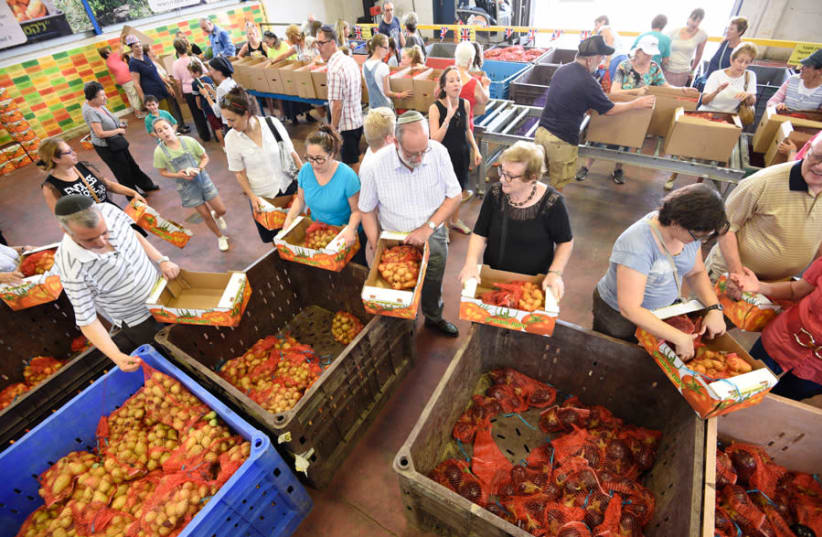Israelis threw away some 2.5 million tons of food last year, worth a total of NIS 19.7 billion ($5.5bn.) and constituting approximately 35% of all food production, according to an annual report published Tuesday by Leket Israel and accounting firm BDO.
A staggering 1.2 million tons of food, almost half of the quantity discarded, was possible to rescue, the report revealed. While 18% of the value of food waste occurred during production, 82% of the waste occurred during distribution and consumption.
In the case of household consumption alone, 880,000 tons of food - valued at NIS 7bn. ($2.2bn) - was wasted last year, with the average Israeli family disposing of food worth NIS 3,200 ($890), equivalent to a month and a half of annual household food expenditure.
The majority of the wasted food was fruit and vegetables, with Israeli households wasting 23% of all food, compared to 28% in the United States and 19% in Europe.
"Israel needs to formulate a national plan for food rescue, and I think it should be developed by the Prime Minister's Office, as it is the only body which can control all the other ministries," Gidi Kroch, CEO of Leket Israel, told The Jerusalem Post.
"Without leadership, nothing will happen. In 2015, the Food and Agriculture Organization of the United Nations issued a declaration to halve food waste within 15 years. Many countries have adopted this declaration, but Israel has not."
The report further revealed that the extent of waste also has a significant impact on the already high cost of living in Israel. Food loss at all stages of the value chain increases food prices by 11% for consumers.
"To put the quantity of household waste into context, think about the Eurovision Song Contest, which will take place at Expo Tel Aviv's Pavilion 2," said Kroch.
"It's a huge building, spanning 50,000 square-meters and 20 meters high. All the 880,000 tons of waste could fit into that pavilion."
To close the food insecurity gap in Israel, Kroch added, only one-fifth of wasted food - worth approximately NIS 3bn. ($835m.) - would need to be rescued. Doing so would only cost NIS 830m. ($230m.), less than one-third of the cost of the wasted food.
"Policy for food rescue and redistributing it to disadvantaged sectors of the population is an effective economic plan in Israel, where a large part of household expenditure is on food," said BDO chief economist Chen Herzog.
"Food rescue is a winning solution, which closes the food insecurity gap by a direct saving of NIS 2.2bn. ($604m.). When quantifying the social and environmental benefits, it’s a saving to the economy of more than NIS 4.5bn. ($1.2bn)."
Aiming to encourage food rescue, Leket promotes a range of policy measures it considers necessary to implement to encourage food rescue.
This includes the development of a national plan for food rescue, setting a national food rescue goal, requiring the food rescue of all governmental and government-financed institutions, reevaluating expiry dates, and requiring food rescue as a condition for private businesses to participate in government tender processes.
In October 2018, Leket recorded a significant legislative victory when the Knesset passed the Food Donation Act, protecting food donors and food associations against potential criminal and civil claims based on damage caused by donated foodstuffs.
Last year, Leket said its team of volunteers rescued 2.2 million cooked meals from IDF army bases, hotel catering companies and restaurants last year. In addition, it saved 15,500 tons of agricultural produce worth NIS 150m. ($41.5m.).
The rescued food was then distributed to 175,000 individuals at risk through the non-profit's network of 200 agency partners across the country.
